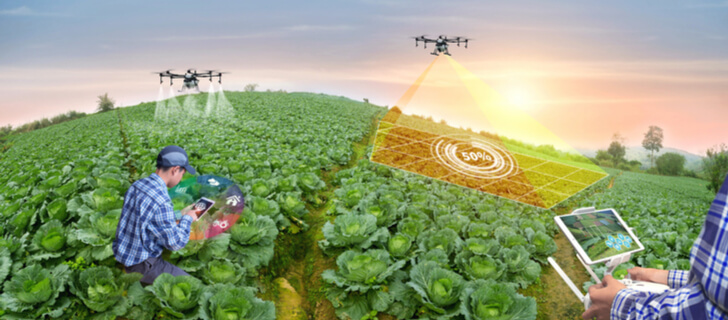
Agro- Based Business
Agro-based businesses involve utilizing agricultural resources to produce goods such as food, textiles, or materials. They rely on crops, livestock, or natural resources for manufacturing and trade..
Agro-Industry Services
Guidance on various aspects of agricultural businesses.
Output Technology
Technology is rapidly reshaping agriculture in India, creating investment opportunities, lifting up rural areas, and feeding the world India’s agriculture industry is at a crossroads. When India became an independent nation 75 years ago, agriculture was the driver of the economy, contributing more than half of the nation’s GDP. Today, India is still one of the world’s largest and most diversified food producers, and agriculture—the source of more than 20 percent of India’s income—remains a central part of the economy. The key to expanding India’s transformation into a farming powerhouse is agricultural technology, or agtech. India lags behind developed farming nations in agtech. Simply put, India’s farmers are competing at a disadvantage: half lack basic farming equipment, three of every four farms are at risk of crop damage from pests and weather, and 50 percent of India’s farmers lack access to traditional financing sources. Those who can get credit often pay inflated interest of 10 to 25 percent above market rates. SAmSA output technology has actualized most of the potential benefits in the economic and environmental aspects. Compared with traditional organic cultivation. The SAmSA output technology can greatly reduce the consumption of resources than conventional cultivation. The percentage of resources saved and the improvement in produce quality and yield in the farm plant are as follows: 1.Economic Perspective: a. 50% reduction of infrastructure cost and a 3–5 times reduction of lifetime cultivation system. b. 80% reduction of fertilization cost because of lower fertilizer consumption achieved through recycling with little drainage of circulating nutrient solution. c. 30% reduction of unit cost because of lower resource consumption and higher productivity. d. 33–75% increase of product weight per unit. e.An increase by 1.8–2 times of amount of a crop per year. f.Better product quality grade. 2.Environmental Perspective: a.Organic cultivation is free-pesticide applications. The cultivated area will have clean and free from pest insects. b. 99% reduction in water consumption. c. 99% reduction in land use compared to conventional agriculture due to a higher productivity per production area. d. 30–50% reduction in plant defects. 3.Social Perspective: a.Increasing demands for fresh food, nutritious food, and functional food for health care and higher quality of life because of high controllability of farm environment b.Light and safe work under comfortable air temperature and moderate air movement..